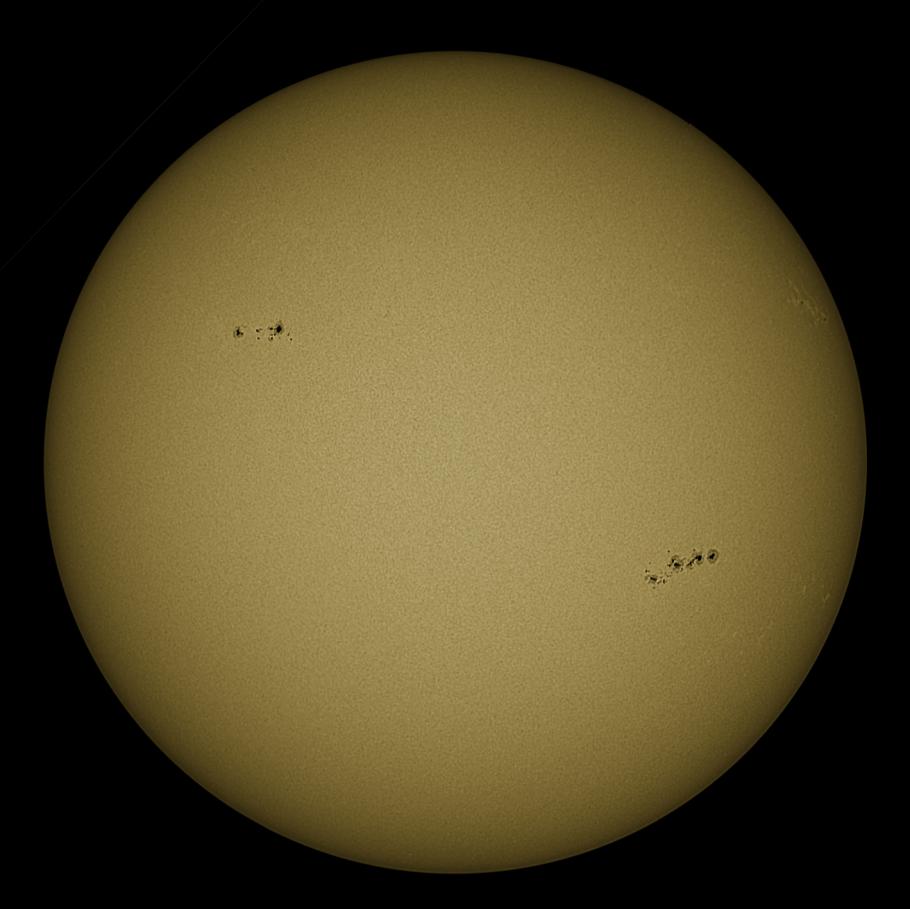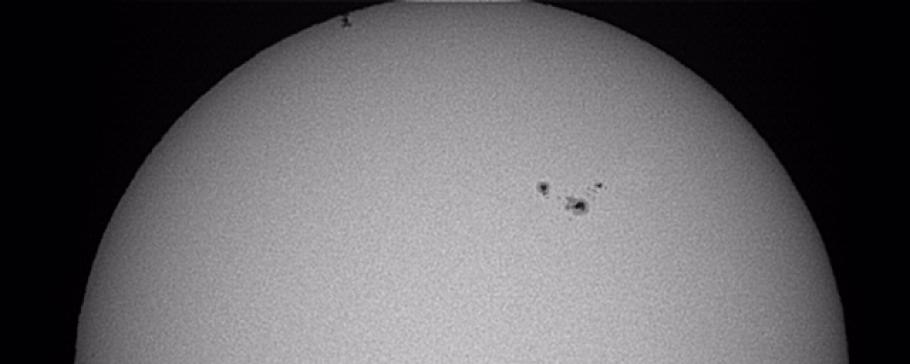On the morning of March 2, I got an excited text message from fellow astronomy educator Shelley Witte, telling me that the International Space Station (ISS) and Space Shuttle Discovery would be coming very close to transiting the Sun from our position at the National Air and Space Museum’s Public Observatory at exactly 3:08 pm. A transit is when one object in space passes in front of another object; in this case it was the ISS and Discovery passing in front of the Sun, appearing as a dark shape on the Sun’s disk. She got this information from calsky.com, a website that lets observers know when and where the ISS will be passing overhead at any location, including any encounters with the Sun, Moon, planets, or bright stars. We were unsure about whether or not we could actually see the transit across the Sun, since we were just outside of the predicted path, but we decided to try our luck. We have several telescopes, which let through different types of light that highlight different features on the Sun. For the transit of the ISS, we used our Tele Vue-85 refracting telescope equipped with a filter that significantly dims the Sun’s light evenly, letting through the light from the Sun’ surface. Using this filter, we can see sunspots in great detail.
We set up our Sun imaging laptop, telescope, and video camera at about 3:00 pm, and waited for the big moment. Fellow Astronomy Educators Katie Moore, Shelley Witte, and other Museum staff and volunteers eagerly watched a large monitor connected to the laptop displaying a live image of what the video camera could see through the telescope. We began recording a video at 3:07 pm, and waited. At 3:10 pm, we were still waiting for something to happen, and concluded that the ISS and shuttle Discovery must have been too far away from the Sun after all. The next Friday, I decided to look more carefully at the video just to make sure that we had not captured anything. About one minute into the video I saw something streak across the top left corner of the Sun and disappear as quickly as it had come. We HAD caught the ISS and Discovery passing in front of the Sun! Somehow none of the six people watching in real time had seen it with their own eyes. I was able to process each frame of the video that caught the ISS streaking across the Sun, and make it into a series of images that shows its progression. I also processed a nice still image that shows most of the ISS’ silhouette against the bright Sun. Unfortunately you cannot see Discovery, even though it was docked with the ISS at the time of the transit. We were all overjoyed to have captured such a rare and fleeting event!


